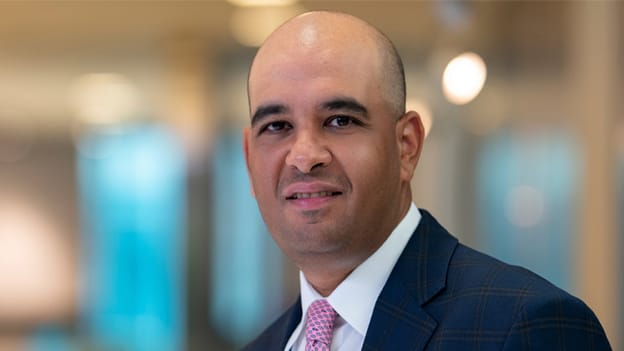COVID-19 is also an opportunity to transform the workforce: EY’s Samir Bedi

People Matters May E-Magazine is out. To get free access, click here.
Given the unprecedented crisis facing businesses across the globe in the wake of the COVID-19 outbreak, how can business leaders adapt to this crisis?
This is the time for leadership to think about what the future may hold for their business and to adapt accordingly. What does recovery potentially look like, and how will they tide over this pandemic when they may be faced with lower business performance? Executives need to not only think about digital transformation, but also the workforce transformation that they can achieve over this period.
Leaders in government need to adapt by learning to balance the economic, social, and medical aspects of the crisis, while continuing to follow governance processes. As many countries face lockdown, governments need to make sure citizens follow the rules to help flatten the curve as much as possible.
We are seeing an increasing number of job losses across the globe. How can business leaders manage cost while ensuring minimal retrenchments?
Businesses need to answer the perennial question of cash, cost, and credit.
The general approach recommended to businesses in this time is to cut all forms of non-essential costs, while ensuring workforce-related costs are among the last to be cut.
Businesses must first look at government stimulus and relief measures that are available. Then, look at how they can reduce salaries with business leaders taking on most of the wage cuts to mitigate the effects felt by lower-earning employees.
If it does come down to the point where costs have been managed, but an organization still needs to go down a retrenchment exercise, communication is vital. This needs to be done in a transparent and objective manner without any form of bias to the process. This has to be done with a lot of care and empathy, but at the same time needs to be handled very professionally.
While we focus on the employee that has been retrenched, we also need to address the impact on the culture of the organization. Organizations may take the option to sacrifice profits in the short term, for better long term success in driving the right workplace culture.
One of the top challenges for business leaders at this juncture would be about getting their people to 'follow' them? How can leaders make decisions and make communications transparent, so everyone follows them?
The role of a leader during this time of crisis is to take their people and organization to a better place. Given that the economy is on a downward spiral, it's likely that every business will be going through troubles and facing problems. For business leaders to be successful, they need to communicate clearly, even to the point of over-communication – over-communicate what the business is going through, how the business is doing, and what the business strategies will be.
We also need to communicate things that we don't know, such as when this pandemic will end. As leaders continue to communicate internally and act on the various permutations and combinations of the business operations, they also need to be honest with employees about uncertainties during this time of crisis.
Employee health and safety must be the foremost consideration of any business during the coronavirus pandemic. How can leaders ensure well-being alongside business continuity?
We see organizations trying to embed a couple of different things, such as staggered working hours, more forms of social distancing, better hygiene in offices, and virtual methods of working and customer service delivery to ensure business continuity. However, all changes should be considered from the perspective of employee health and employee well-being. Employees’ acceptance of these changes will be critical for organizations in terms of a recovery period.
In the past, there may have been organizations whose cultures somehow pressured people who were feeling slightly unwell to come into work anyway. Post-pandemic, we anticipate that that will change. In this new normal, employee health and well-being must be front and center, more than ever before.
Many organizations are seeing opportunities emerging in addition to challenges, whether it be in addressing new client needs or opportunities to improve your organization's effectiveness. What opportunities are you seeing?
Organizations can take this time to improve their effectiveness and efficiency with digital means and mechanisms available to us today. Things that would have maybe taken years for business leaders to accept are now a reality because of the impact of COVID-19 on our lives.
Consumers’ expectations of an organization's product or service will also change. Now they're more concerned about whether the right system, methods, and processes have been adopted in order to develop the product or service that they're consuming. These aspects will become more critical and will change the way we consume things, creating opportunities for organizations to leverage this change in consumer behavior.
Do you see synergies in the way in which this emergency is managed worldwide?
Nearly every country is in lockdown today and has similar safe-distancing measures in place. This means most employees worldwide are affected, irrespective of the organization they're working for, be it a Multinational Corporation (MNC), Fortune500 company or an SME with a single-country presence.
There are a lot of best practices that could be shared amongst sectors and businesses – for instance, how to manage if an employee has COVID-19, or how to manage fear and uncertainty in the workplace – that could help accelerate our pace of adjustment and galvanize the strengths of the entire industry in the new normal.
What are your thoughts on how the world will be different after COVID-19, and how are you moving to address that new world?
Leaders should look at the situation as an opportunity to transform the workforce by teaching new skills and transforming the workplace through meaningful digital experiences with customers and partners.
We need to consciously recognize that the new normal is now the standard way of doing things. The faster we realize this; the faster organizations can transform and ensure the reskilling and lifelong learning of employees.
As the lines between work and home become more blurred, we must find some forms of separation to allow us to connect with our families and loved ones. Finding a way to draw these personal boundaries is vital to ensuring that we can continue to work meaningfully and efficiently.
People Matters May E-Magazine is out. To get free access, click here.
















